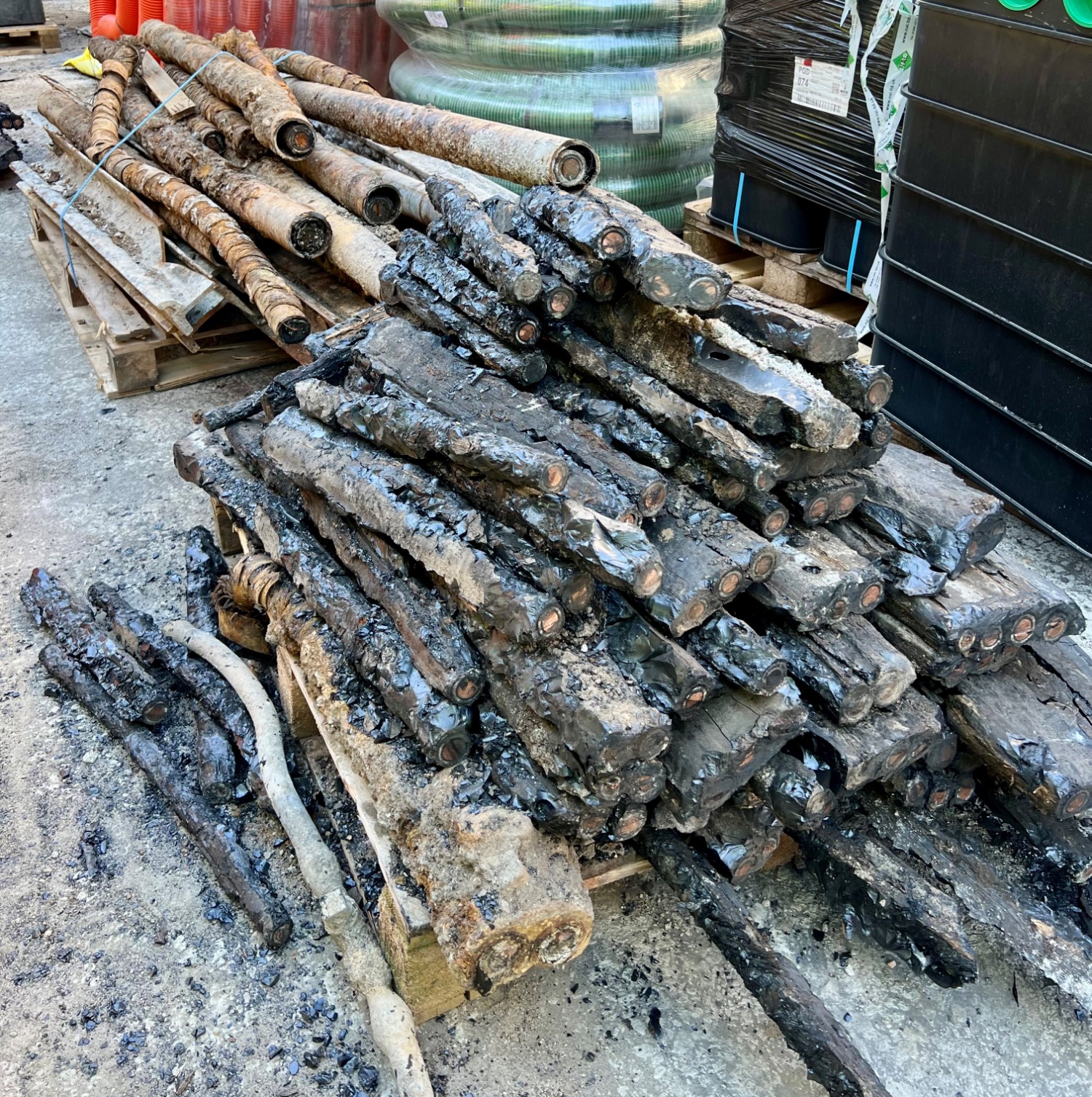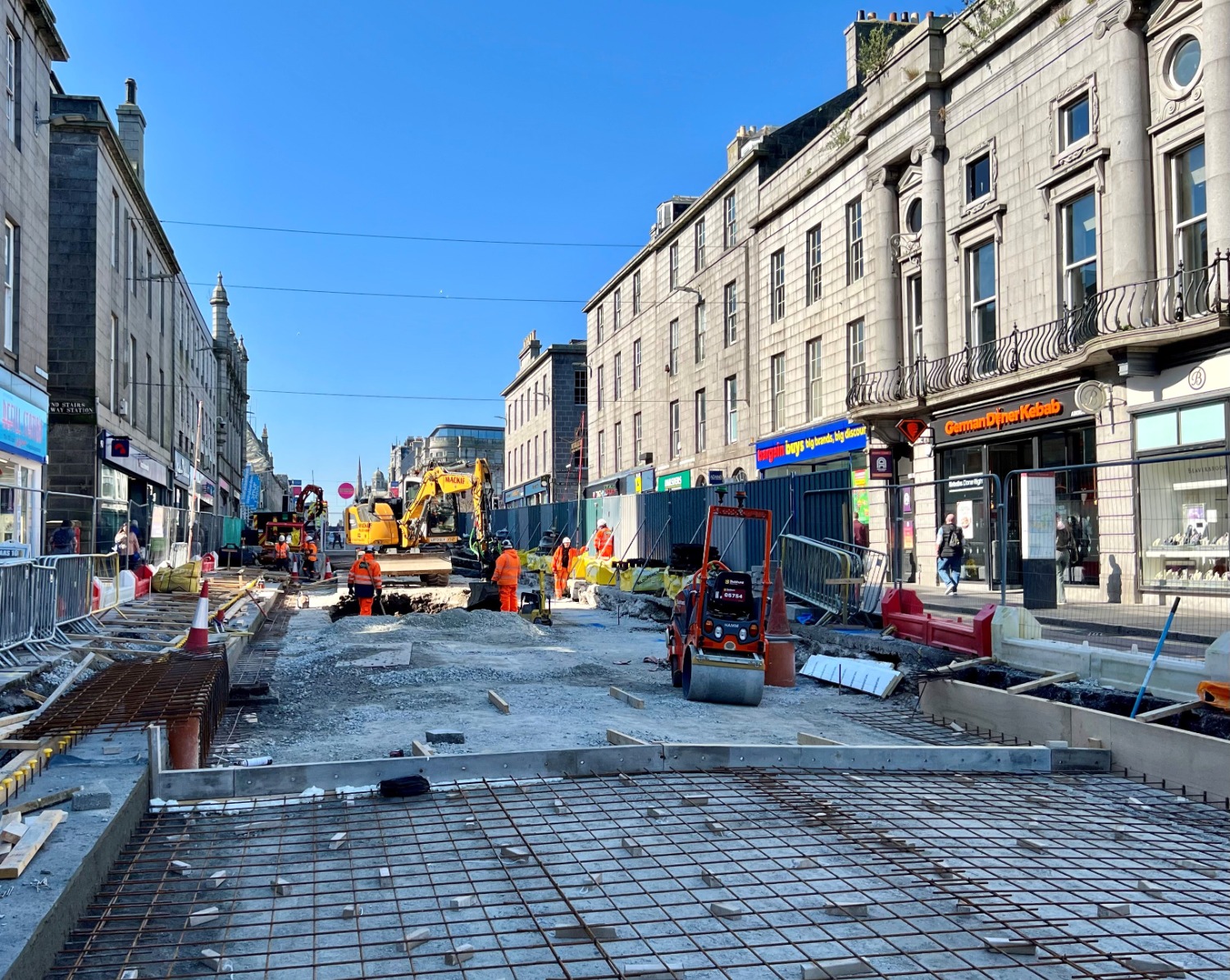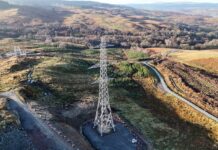
THE project team working on the £17 million transformation of Aberdeen’s Union Street have revealed the hidden obstructions they have uncovered whilst working on the development.
From historic tram infrastructure to unrecorded utility pipes and cables or deep, hidden manholes, the discoveries have presented ‘significant’ engineering challenges for Morrison Construction Infrastructure, who are the main contractor for the Aberdeen City Council development, which is part of the £150 million city centre and beachfront master plan.

One of the biggest hurdles for the team has been finding multiple layers of uncharted utility services buried beneath the road surface. These include clusters of electric cables, gas and water pipes, and other infrastructure that were previously undocumented on any maps or diagrams. More than 20 unrecorded clusters have been found so far across the site.
Uncovering these services means work cannot proceed as planned. Instead, gas, electricity and water organisations must be consulted and visit the site to determine whether the cables and pipes are still live and operational or redundant.

Among the more unusual finds was an unknown capped off concrete access shaft which led down to a 10m deep underground culvert. Due to the risk of collapse, the access shaft could not be safely removed. The project team then had to devise an alternative engineering solution to redesign the new street drainage system around this major obstacle.
In another historical find, workers uncovered old electric tram power cables encased in timber-framed wooden boxes which had been waterproofed and insulated with bitumen. Electric trams began operating in Aberdeen in 1899.
Eight of the former tram power lines have been found running the length of the project site. The bitumen insulation, designed to protect against Aberdeen’s damp climate, highlights the durability and engineering ingenuity of the city’s historic tram network.
Further evidence of the tram system was also found, with old metal sleepers encased in concrete beneath the road surface throughout the site.
The site team also uncovered an 46cm diameter cast iron carrier pipe running the full length of the project area. Checks have been unable to confirm what the pipe was used for, but it is believed to be an old redundant water main, which then had to be removed to allow current construction to progress.
The improvement works cover a 300m section of central Union Street and are divided into three 100m sections between Market Street and Bridge Street. Work began on the eastern section from Market Street and immediately started to find hidden obstructions.
Staff are currently working on the south pavement from Market Street and have encountered similar issues with one utility recorded on service maps, but another nine unrecorded services were then uncovered during excavations, including two gas pipes.
Given the challenges faced in the initial stages, the team have taken proactive steps to conduct advance excavation work in the western section of the site and deep trench investigations in the central section, helping to identify further potential clashes with uncharted utilities before the main construction phase began there.
While the roadway was exposed, the construction team also took the opportunity to install the new main carrier drainage pipe and associated chambers, ensuring that future works could proceed more efficiently.
Rod Buchan, construction manager for Morrison Construction Infrastructure on the project, commented, “Despite the challenges presented by these unexpected underground discoveries, the team remains committed to delivering the much-needed upgrades to Union Street Central.”
Hub North Scotland is Aberdeen City Council’s delivery partner for the city centre and beachfront master plan. The organisation’s project director, John Edwards, said, “The project team went to great efforts before works started to determine what lay beneath the ground.
“However, there is always a possibility of finding these uncharted obstructions which can be incredibly frustrating for the site team and can have an impact on progress. The team continue to work hard to minimise that for the shops and businesses.”











